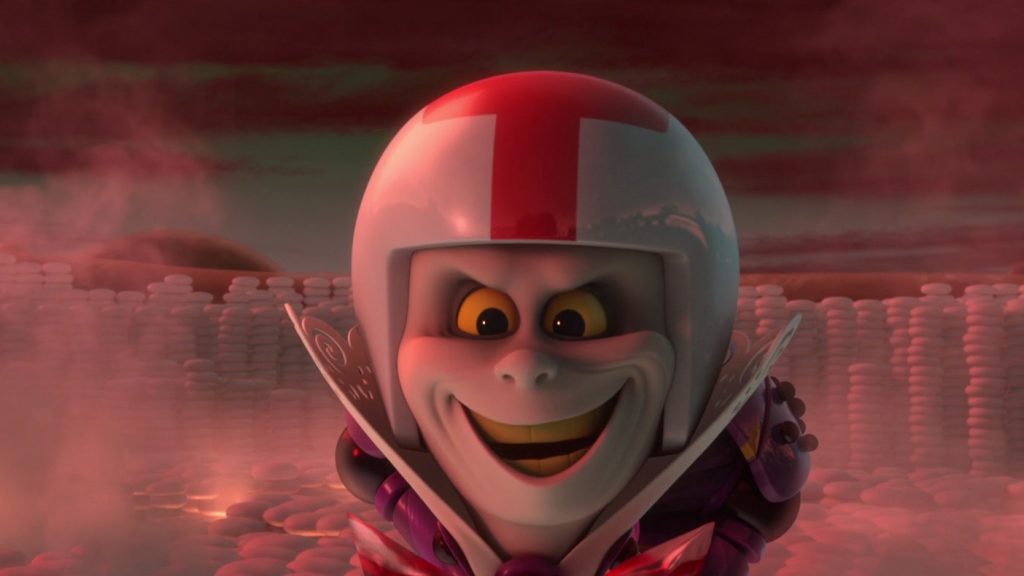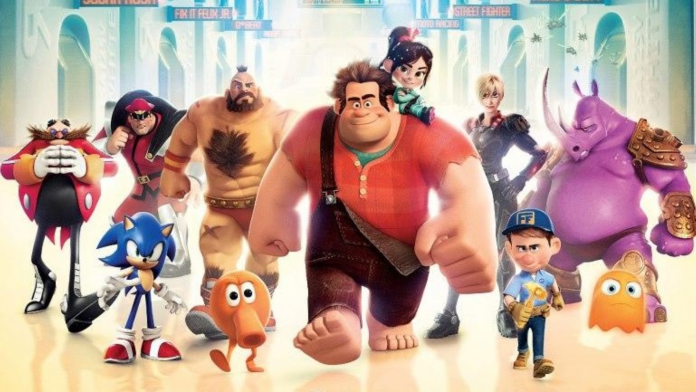Wreck-It Ralph is a joy to revisit. Original, heartfelt, and full to the brim of that elusive Disney magic, it shines just as brightly a decade on as it did in the year of its release. In fact, despite its numerous pop culture references, Wreck-It Ralph hardly seems to have aged at all.
By the time Wreck-It Ralph was released, twist villains in animated films were far from a new concept. Pixar had gained widespread critical acclaim for films like The Incredibles, WALL-E, and Toy Story 2, all of which feature a twist villain. It is easy to speculate that Disney, having acquired Pixar in 2006, decided to implement aspects from the other studio’s successes into their own animated films.
The proliferation of twist villains in the Disney and Pixar releases of the 2010s is a testament to this early success, yet many following Wreck-It Ralph have faced a more mixed reception. Prince Hans in Frozen is only an active threat for the last fifteen minutes of the film’s run-time, making him seem more like a tool used to enhance conflict in a climax that didn’t really require enhancement. Similarly, the motivations of Professor Callahan in Big Hero 6 seem poorly developed, and the machinations of Dawn Bellwether in Zootopia are woolly at best.
Even Pixar’s most recent twist villains, created under the watchful eye of Disney, have not been as memorable as their earlier counterparts. Ernesto de la Cruz in Coco is menacing enough, but his lack of screen time means that the extent of his villainy remains largely unexplored. Likewise, Zurg in Lightyear is somehow less intimidating than he was in Toy Story 2, and the twist that reveals that he is an alternate version of Buzz Lightyear is confusing.

So why does Wreck-It Ralph‘s Turbo succeed when so many twist villains fail?
Turbo straddles the fine line between entertaining and terrifying, whilst his twist reveal balances shock-value and credibility with similar precision. He is established as a villain in the first five minutes of the film. When Ralph makes a casual reference to wanting to leave his game during a “bad guys anonymous” meeting, he is admonished by the other attendees who ask, in hushed tones, if he is going to “go Turbo.” These references are built up carefully throughout the script and cemented later when Fix-it-Felix reveals Turbo’s backstory. He explains how Turbo abandoned his game for another out of jealousy and describes the resulting demise of both Turbo’s own game and the one he invaded. These actions seem chillingly parallel to Ralph’s by the midpoint of the film.
When we are introduced to King Candy, the Mad Hatter–esque ruler of the game Sugar Rush, his menace is in short supply. His goofy, clown-like movements accompanied by Alan Tudyk’s exuberant vocal performance make him a figure of fun rather than fright, and his sharp visual contrast to Ralph makes him appear pathetically overpowered. The only trace of Turbo visible in him is his vigorous gate-keeping of his game, which could easily be coincidental. Simply put, he seems to be of no real threat.
However, King Candy’s questionable behaviour towards Vanellope soon provides glimpses of Turbo. His desperation to ensure that Vanellope doesn’t participate in a dangerous race is disguised by a thin veneer of genuine care for her. The story he spins about the tragedy that Vanellope’s glitching may cause is plausible, and convinces Ralph to act in the destructive way he has begun to loath himself for. It’s heartbreaking to witness Ralph give in to King Candy’s manipulations upon first watch, and chilling every time after. Knowing King Candy’s real identity makes this behaviour seem all the more sinister, as with this knowledge comes the understanding that his intentions are solely self-serving. He has already put two games out of commission; he does not care about consequences that affect anyone but himself.
The real twist to this villain is not that he is indeed a villain, but instead that he is that villain. When King Candy glitches to reveal his true identity as Turbo, the audience does not have to suspend their disbelief in the way that they are forced to with the twist reveals of Prince Hans, Emperor Zurg, or any of Disney’s other attempts. King Candy being Turbo feels organic. The delight of the twist is that you can see it coming, it makes narrative sense, and yet you are still pleasantly shocked. It’s thrilling stuff.
Turbo becomes even more frightening during the dramatic climax of the film. His final form as part King Candy, part Turbo, and part Cy-bug (an insectoid alien escaped from another game) is as creative as it is visually disturbing. The contrast between his erratic, scorpion-like attacks and his quirky, comic vocal elements is yet more unsettling. Couple this with the very real threat he poses to Ralph, Vanellope, and the arcade and the stakes feel substantially high.
Ralph defeats Turbo by choosing to sacrifice himself. He embraces his destructive capacity—by using the features that make him a ‘bad guy’—in order to save Vanellope and the rest of the arcade. This contrasts against the selfishness of Turbo, who was originally the ‘good guy’ of his game. Hence, the film’s climax cements the idea that goodness is not inherent, but instead based upon choices made by the individual, regardless of the role they have been designated by society.
Ultimately, Turbo is destroyed by both Ralph’s selflessness and his own hubris, but he leaves an impact on the characters of the film, the narrative, and, seemingly, films that followed. It would appear that Disney’s animated films have since exhausted the twist villain trope. They started strong with Turbo, but then followed with a series of increasingly mismanaged attempts. Recent years have seen the release of Frozen II, Onward, Luca, Encanto and Turning Red, all of which feature no central villain.
Perhaps we have moved past the need for narratives with one distinct antagonist. Or perhaps even the studio managed to bore itself with an overuse of the twist villain trope. Despite this, it is likely that Disney may try its hand at a twist villain again soon, as all good trends exist as part of a cycle. Let us hope that when they do, they take inspiration from one of their first, and best, and ‘go Turbo’ one more time.
Word by Briony Havergill
Support The Indiependent
We’re trying to raise £200 a month to help cover our operational costs. This includes our ‘Writer of the Month’ awards, where we recognise the amazing work produced by our contributor team. If you’ve enjoyed reading our site, we’d really appreciate it if you could donate to The Indiependent. Whether you can give £1 or £10, you’d be making a huge difference to our small team.
